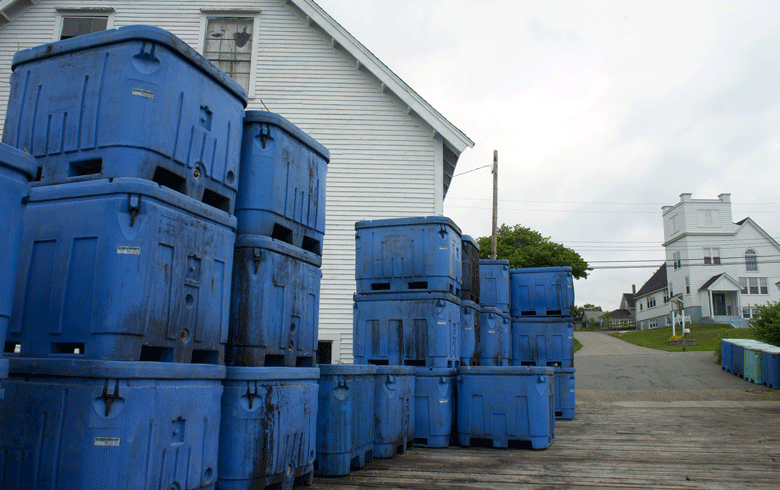Over the past year there has been renewed focus on the value of infrastructure. Transportation, health, information, electrical, and even the food system’s infrastructures have all been stressed, tested, and failed as we collectively experienced the fallout from years of undervaluing and underfunding the foundational elements that keep our society safe, healthy, and connected.
In particular, the COVID-19 pandemic revealed that the infrastructure around our food was in much worse shape than we ever could have imagined. It took only a few disruptions in disparate parts of the world to not just leave our supermarket shelves bare of toilet paper, but also of many food staples we have come to rely upon.
Fortunately, when chicken, pork, and beef could not be found, Maine’s working waterfronts were able to supply folks with fresh fish, oysters, scallops, and lobsters to help relieve some of the building pressure (and fear) that came from empty supermarkets.
There are few resources available for protecting or investing in working waterfront properties.
The marine resources of the Gulf of Maine hold a fantastic opportunity for Maine, and the working waterfront is our entryway to the cold, clean waters of the Atlantic. Working waterfronts are an overlooked and oft forgotten part of Maine’s local and regional food system infrastructure, and 2020 was a stark reminder that working waterfront preservation must be a priority as we look to the future.
Hundreds of millions of pounds of some of the best food in the world are carried across our docks by the salty, calloused hands of Maine seafood harvesters, yet there are few resources available for protecting or investing in working waterfront properties.
Despite what Netflix’s Seaspiracy and other alarmist documentaries may lead you to believe, Maine seafood is healthy, sustainable, delicious, and an excellent choice for your next meal. It does not require any fresh water to grow, it is free of added hormones and antibiotics, it is beneficial for your brain, and has numerous crucial micronutrients for your body.
To put it simply, seafood is one of the world’s most perfect superfoods, and Maine’s working waterfront holds the key to accessing it.
From an economics perspective, seafood is growing in demand around the world and is a premium product emblematic of Maine. The coastal communities throughout our state have the core competencies to perfectly embrace the opportunity of seafood if we put in the work now to protect that future.
But, just as the pandemic brought more neighbors to the working waterfront for seafood, it also brought new development pressure to our coast as remote work and the exodus from city life has made Maine more of a destination than ever.
In many of Maine’s coastal communities, a combination of increasing property values and the transition of property away from traditional fishery uses means that we are on the cusp of losing important working waterfront, big, small, and discrete throughout the state. While Maine is known for its abundant coastline, a shockingly small portion of it, just shy of 20 miles, is considered “working waterfront.” Additionally, only a fraction of that is directly related to fisheries, aquaculture, and food production. Organizations like the Maine Coast Fishermen’s Association have been fighting for better regulations and science to rebuild our Gulf of Maine resources but if we’re losing local access all those efforts will be for nought.
One of the only tools we have in our toolbox to protect working waterfront properties in Maine comes from the Land for Maine’s Future Program (LMF). LMF buys up development rights for working waterfront, which gives a much-needed injection of capital into the property, while also ensuring that the working waterfront is not sold away for condos, houses, or hotels.
This year, MCFA is working with partners from throughout the state to advocate for the refunding of the LMF program to ensure that our fishermen, aquaculturists, and fishing communities have the infrastructure they need to keep harvesting the best seafood in the world.
But we can’t do it alone. We need your help and support. One of the silver linings of the pandemic was that we witnessed our greatest infrastructure, our communities, band together through a time of need to hold each other up. Buying Maine seafood and supporting the organizations doing important work along our coast are little things you can do every day. Additionally, let your legislators know that the working waterfront is crucial to Maine’s future and that funding the LMF program is a concrete action we can support those waterfronts. For information about specific opportunities where your voice is important you can visit mainecoastfishermen.org.
Ben Martens is executive director of the Maine Coast Fishermen’s Association.





